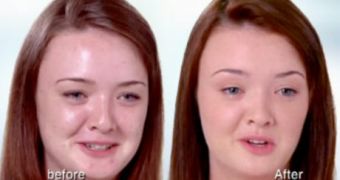The ASA (Advertising Standards Authority) has ruled to ban yet another television ad that might be misleading for customer as regards the results of the product that is being advertised. Made by DDB London for Johnson & Johnson spot cream Clean and Clear, the ad has women with face makeup for the “after” images and, as such, is considered misleading, the Guardian informs.
Two customers filed official complaints with the ASA as to the odds of the product actually having the results shown in the television clip. The women featured in it, neither actresses nor models, both the ads agency and the makers insist, are shown without makeup (except eye makeup) for the “before” shots and then with a “light foundation” for the “after” images. The difference is, of course, striking and the ASA deemed that it might have had something to do with using foundation as well.
“A TV campaign for a face cream that promised to make skin look blemish-free has been banned by the advertising watchdog because the ‘after’ shots were achieved using makeup. The television campaign, for Johnson & Johnson, promoted the company’s Clean and Clear Spot Control Kit. The ad, created by ad agency DDB London, cited a trial with 30 girls using ‘before and after’ shots and their testimonials to show the effectiveness of the anti-spot cream,” the Guardian writes.
The testimonials concluded that, in 100% of the cases, the girls in the trial noticed improvement in the first day. Boasting such amazing results got some potential customers asking questions, questions that they later directed to the ASA. Though Johnson & Johnson insists that the foundation was only applied to the girls on the “T zone” to prevent the shininess of this area from distracting attention from the results as regards spots and blemishes, the watchdog was not convinced. The ad was consequently banned.
“[We] noted a marked difference in the appearance of the clarity of skin between the before and after shots. We considered that, in order to make the before and after comparison fair, both shots should have been taken under the same conditions (both without make-up) to ensure that any visible improvement was an accurate representation of what could be achieved with the product,” the ASA argued in a statement released to the Guardian on the subject of the ban of the ad.

 14 DAY TRIAL //
14 DAY TRIAL //